WINSTONlinks, Gneven OT Vorbeck, Germany.
Opened only a couple of months ago, WINSTONlinks is the work of Canadian architect David Krause who lives in Germany. It is located near Schwerin, near – but not on – the Baltic coast of the former East Germany.
Looking at the surrounding countryside this must have been gently rolling agricultural land on a base of deep sand. Krause has been able to use the variations in elevation to produce a layout with frequent changes of level. More, he has been able to extract enormous quantities of sand to shape the course, in the process creating a number of formidable chasms, not least that known as the Grand Canyon.
I have never seen or played a course with so much going on. Something happens every two or three feet. There is hardly a piece of level ground other than the tees. Fairways roll like a swelling sea. Bunkers, grassy depressions, hummocks, ridges, swales and pits litter the course. Each fairway is bounded by artificial dunes resembling mini-volcanic ridges. Most of the greens are raised above fairway level, often substantially, and there are some wicked borrows. On the day of our visit their surfaces were very slow and putting was a misery. The detail that has been built in to every aspect of the design is extraordinary.
With such intense activity on the ground the frailty of my ever-declining golf was exposed cruelly. The course planner states, ‘WINSTONlinks demands precision playing and high proficiency from athletes.’ Count me out! It means, I am afraid, that I can tell you nothing about playing the course. Just look at the pictures and come to whatever conclusions you can. It was late on an overcast afternoon when we visited so the pictures are dark – sorry – and my camera has made the course look greener than it is.
From the back tees the course runs to 6459 metres (7066 yards); from the yellow tees the length is 5925 metres (6482 yards); the red tees give a length of 4856 metres (5312 yards). Par is 72. I’ll give hole lengths in metres from the back tees, add 10% to convert to yards (or multiply by 1.094 if you want to be inch perfect).

Walking to the first tee you get a sample of what’s in store.
1. 408 metres par 4.

The fairway begins to curve sharply to the right about 170 metres out from the tee.
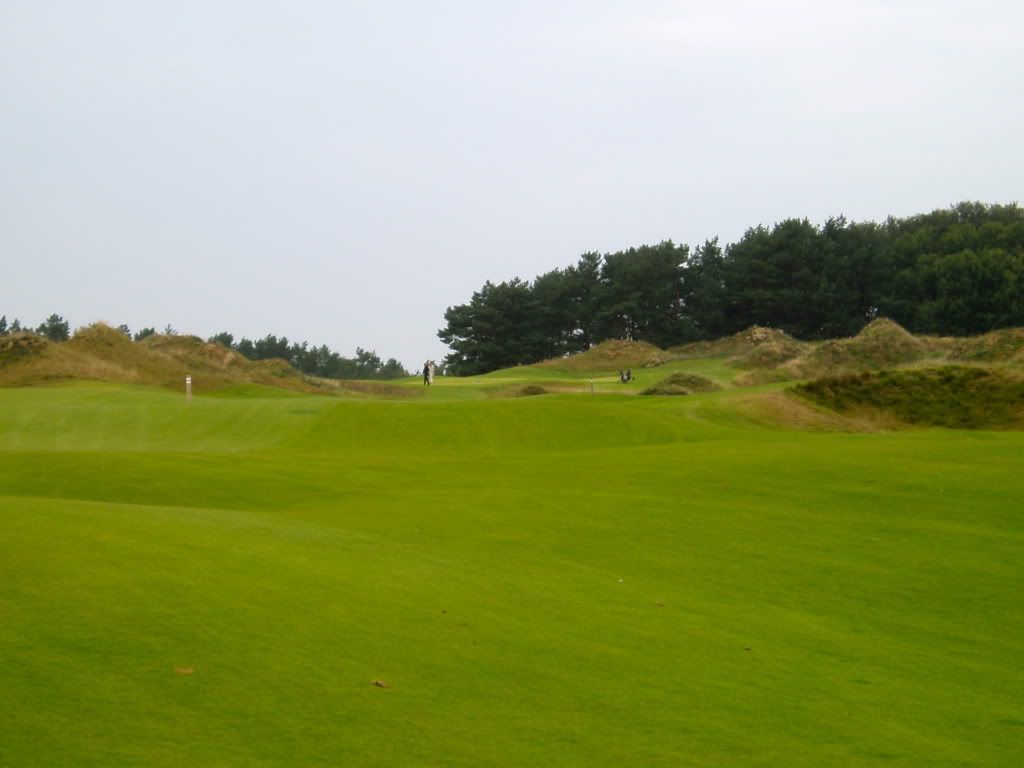

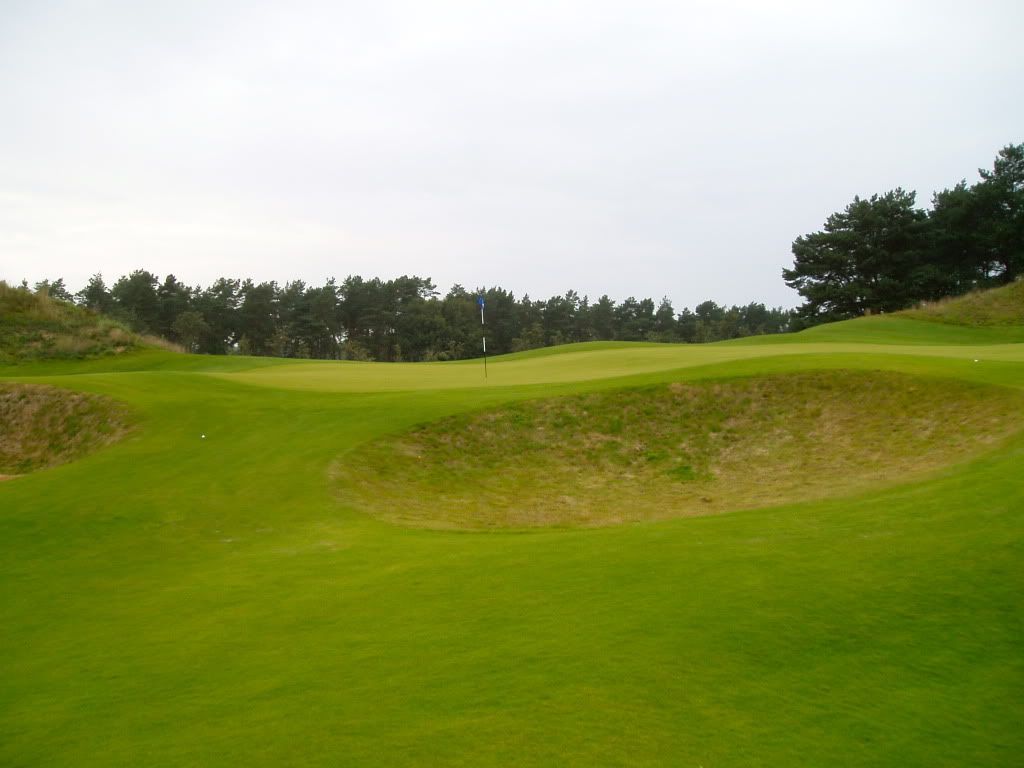
The hole then climbs steadily through a host of bunkers and depressions to an angled green with a big right-to-left break.
2. 318 yards par 4.
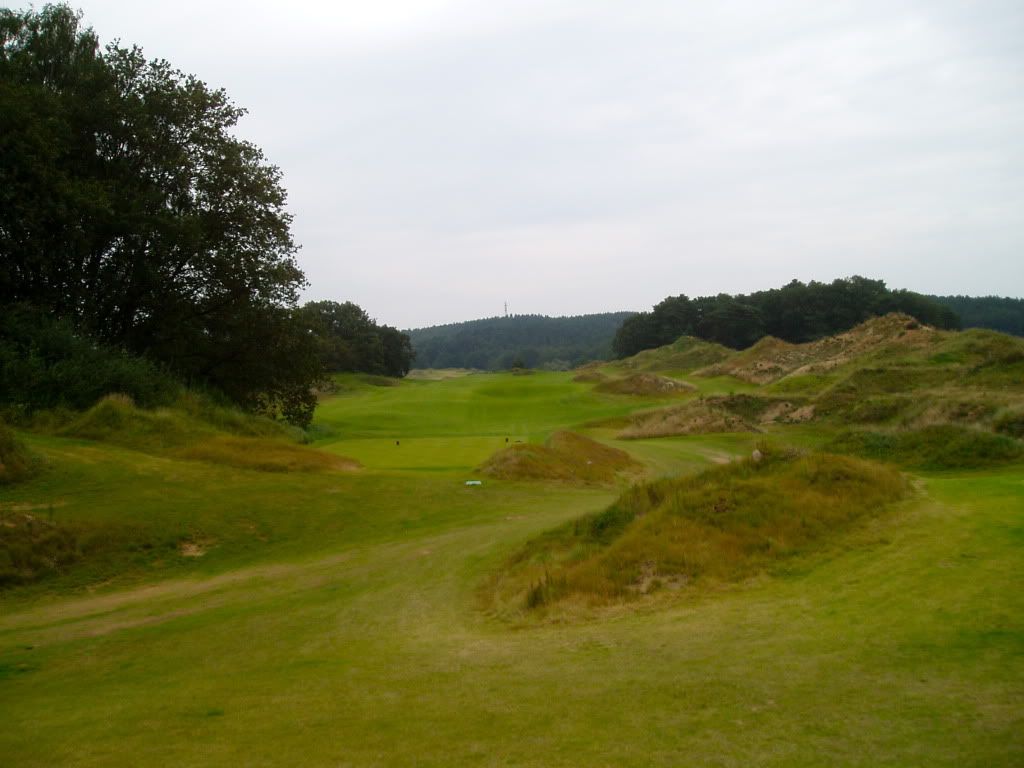
Probably the simplest drive of the round.
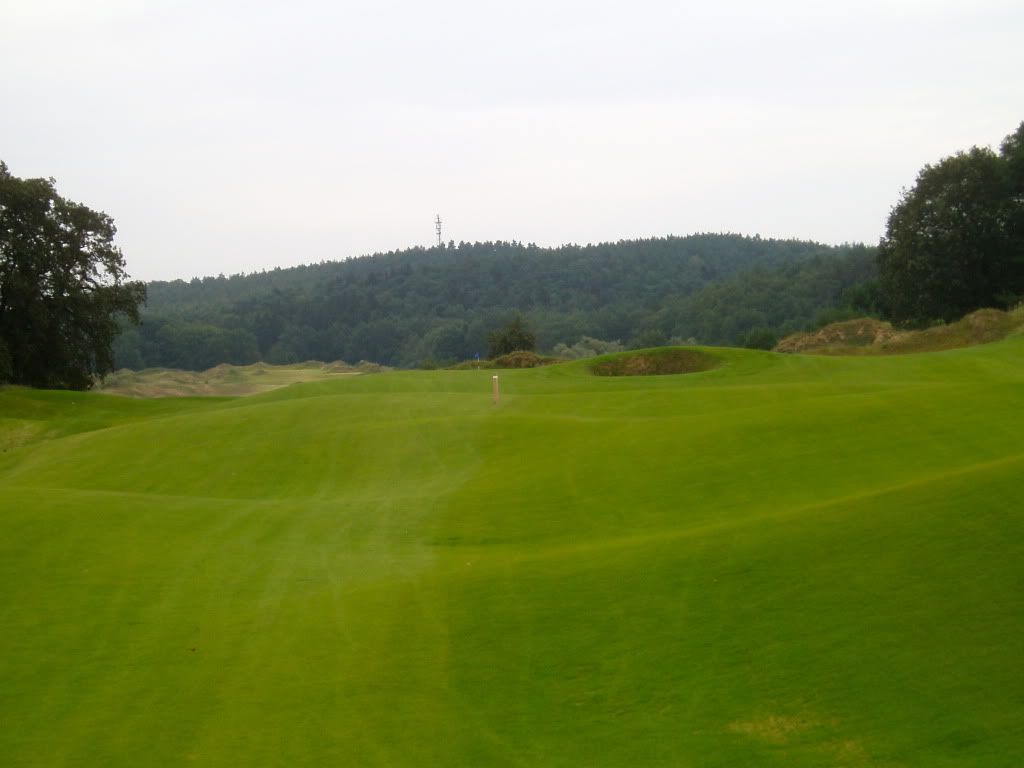
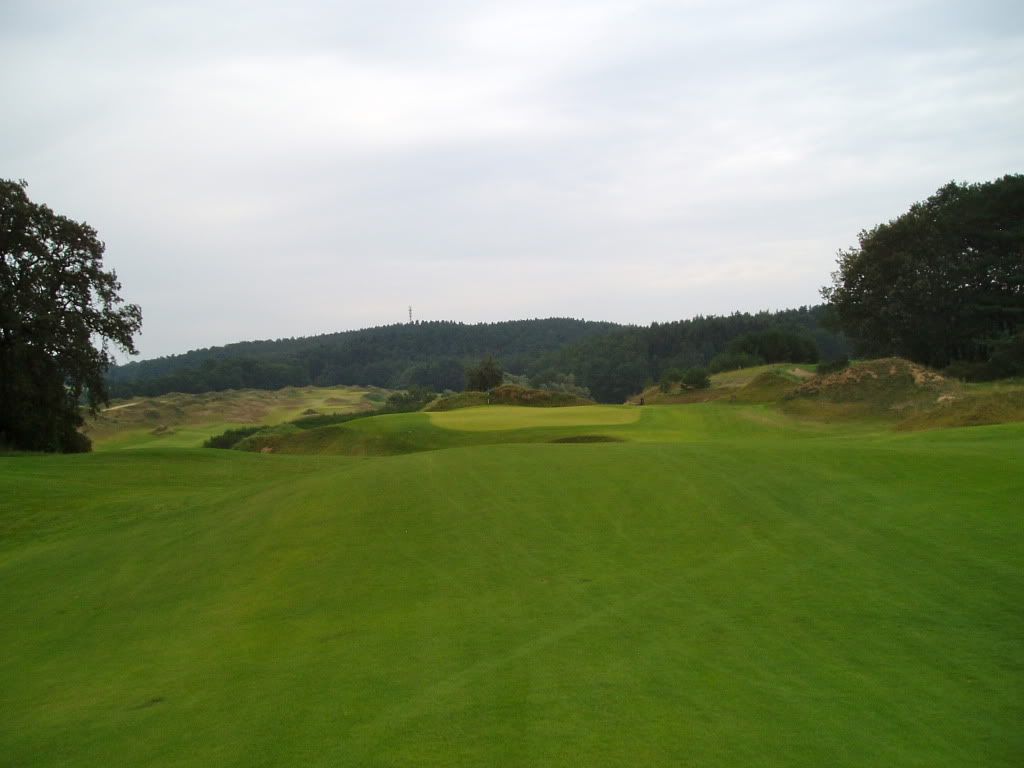
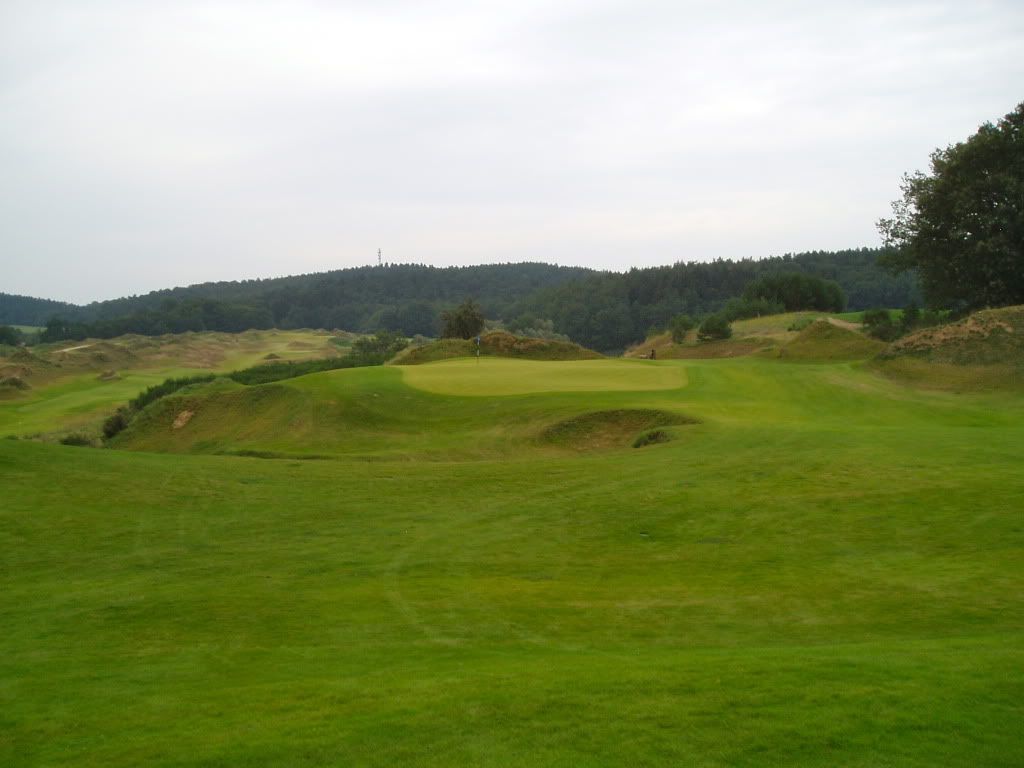
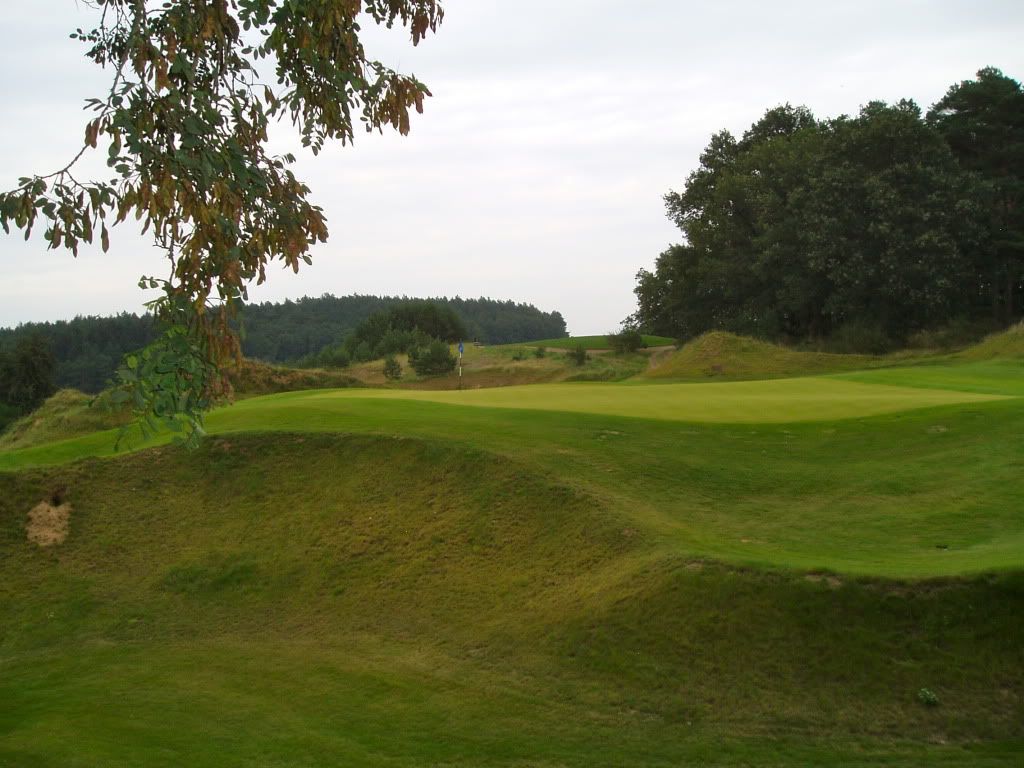
But the pitch needs to be inch-perfect.
3. 461 metres par 5.
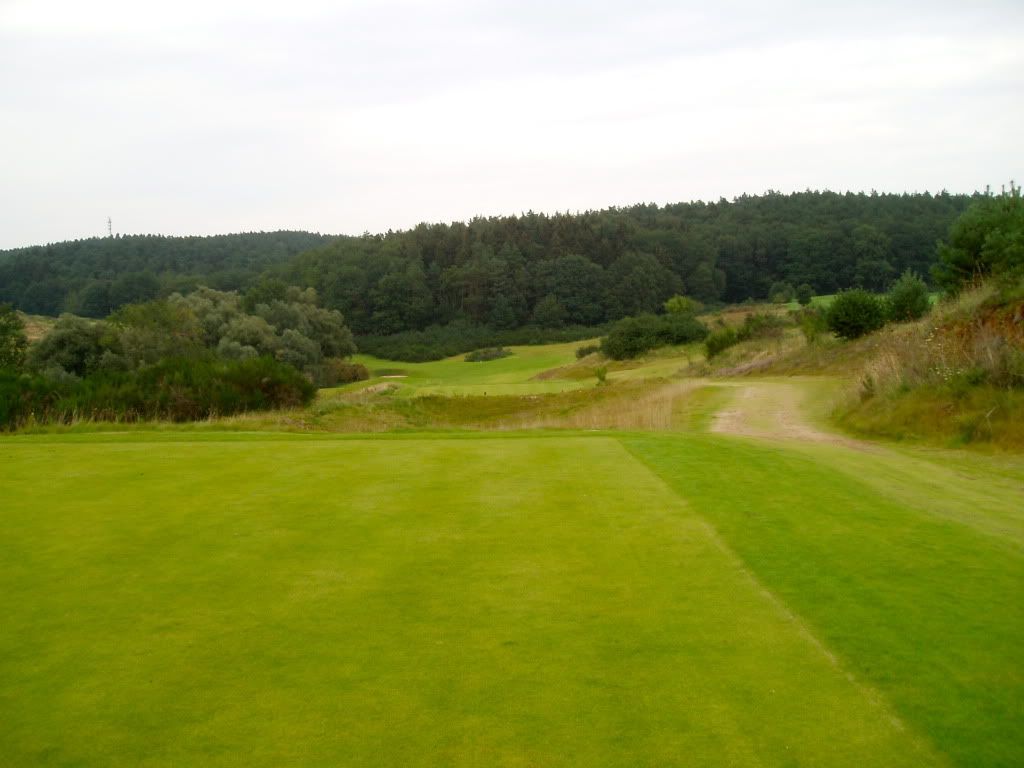
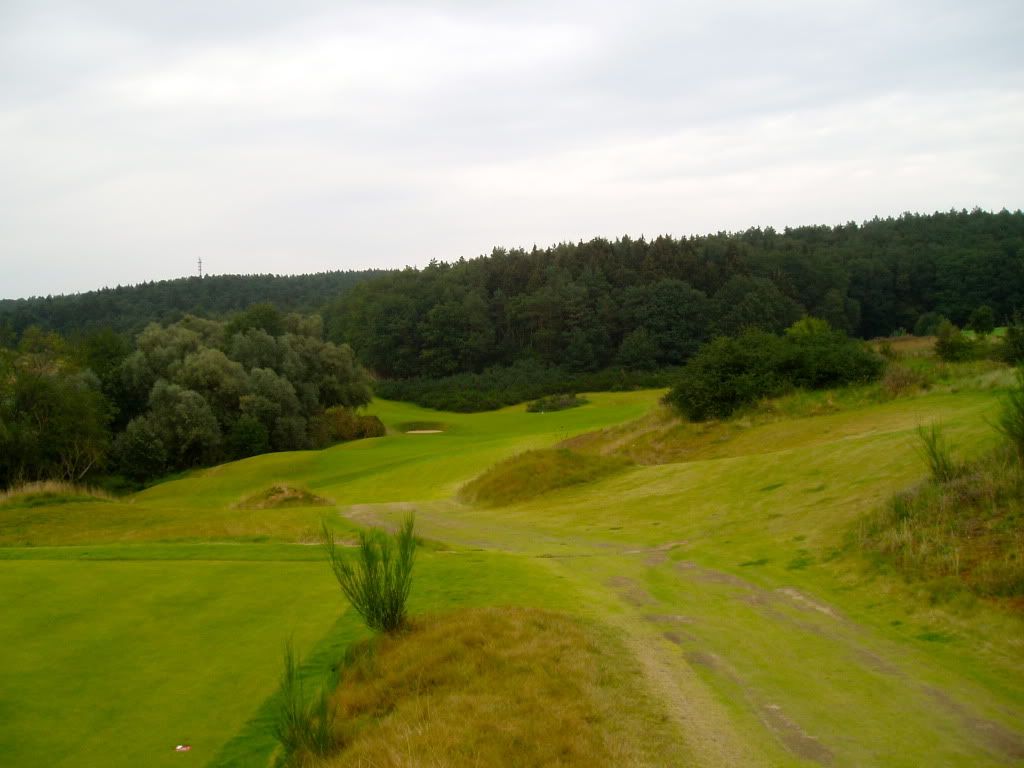
A downhill drive to a corner where the fairway swings sharply left. The bunker is 239 metres from the tee, the gorse 268 metres.
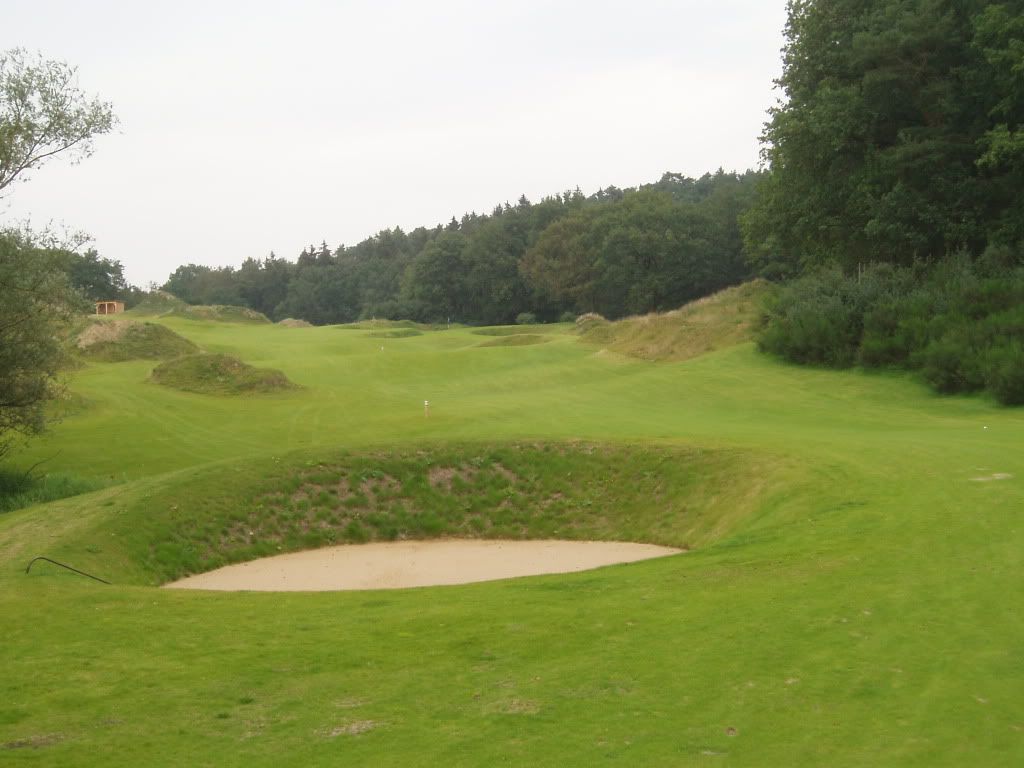
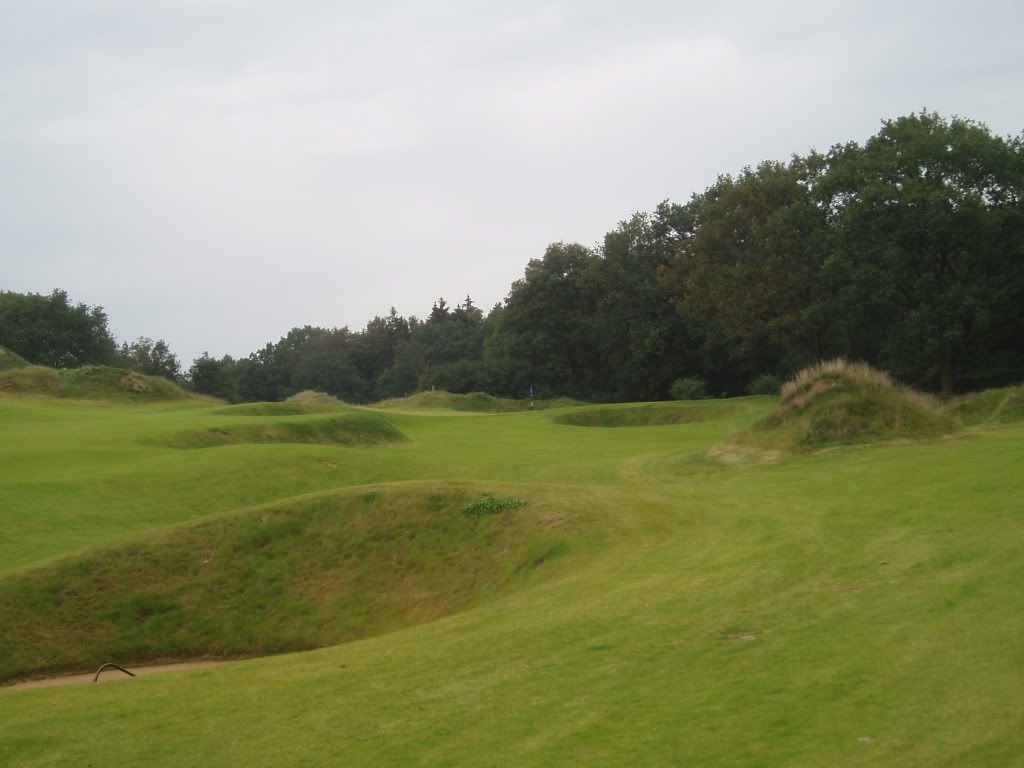
The approach is uphill through humps, hollows and bunkers to a green on two distinct levels.
4. 419 metres par 4.
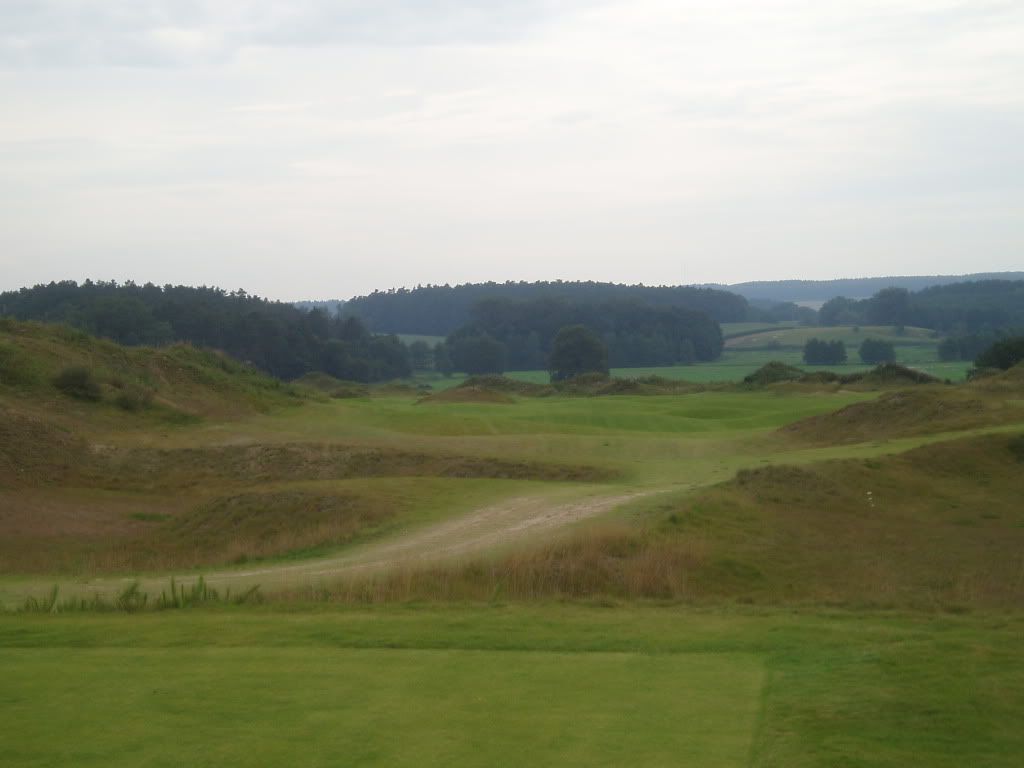
Stroke 1.
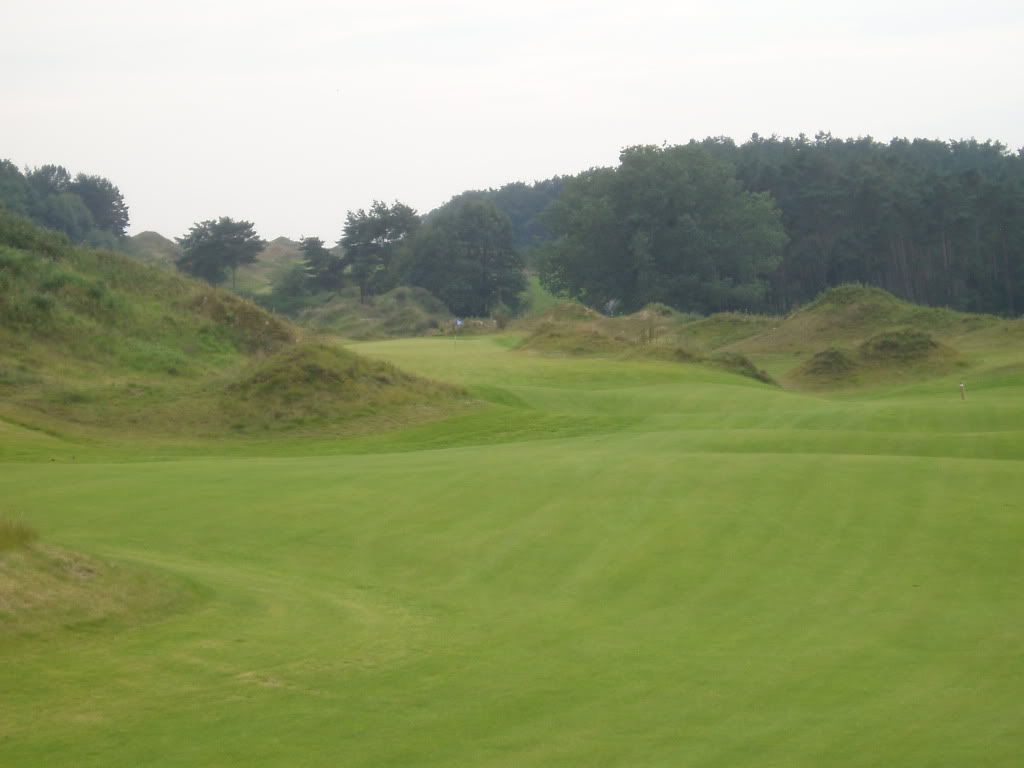

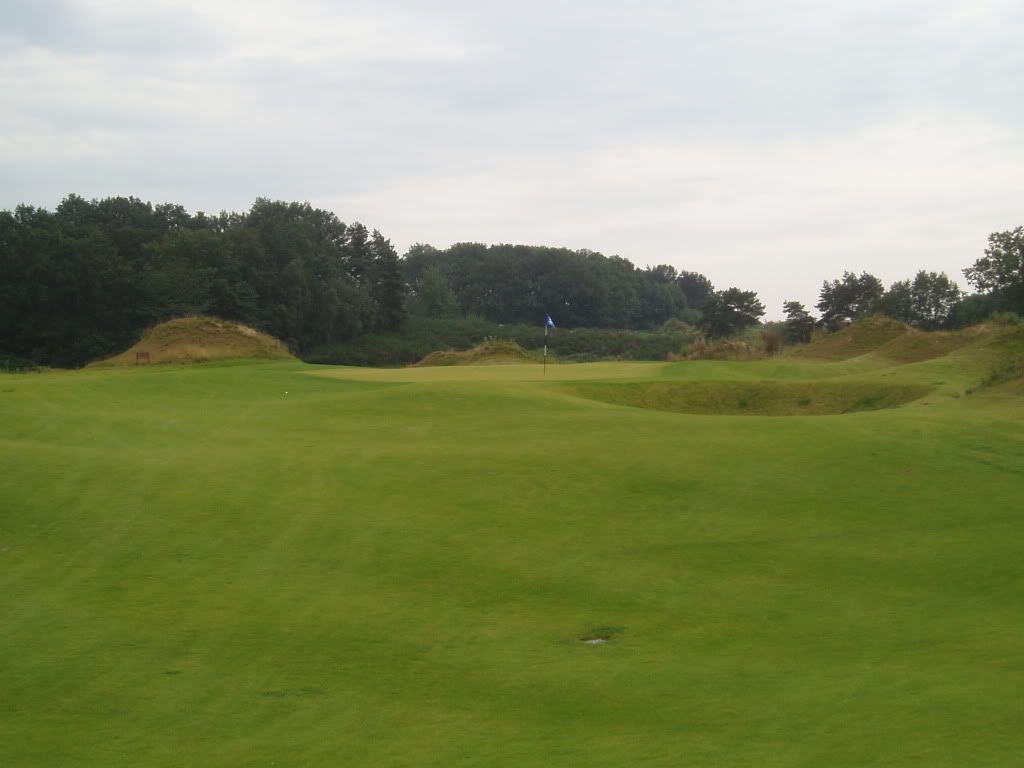
Late in the day the fairway bends to the left, the approach shot played between mounds.
5. 174 metres par 3.
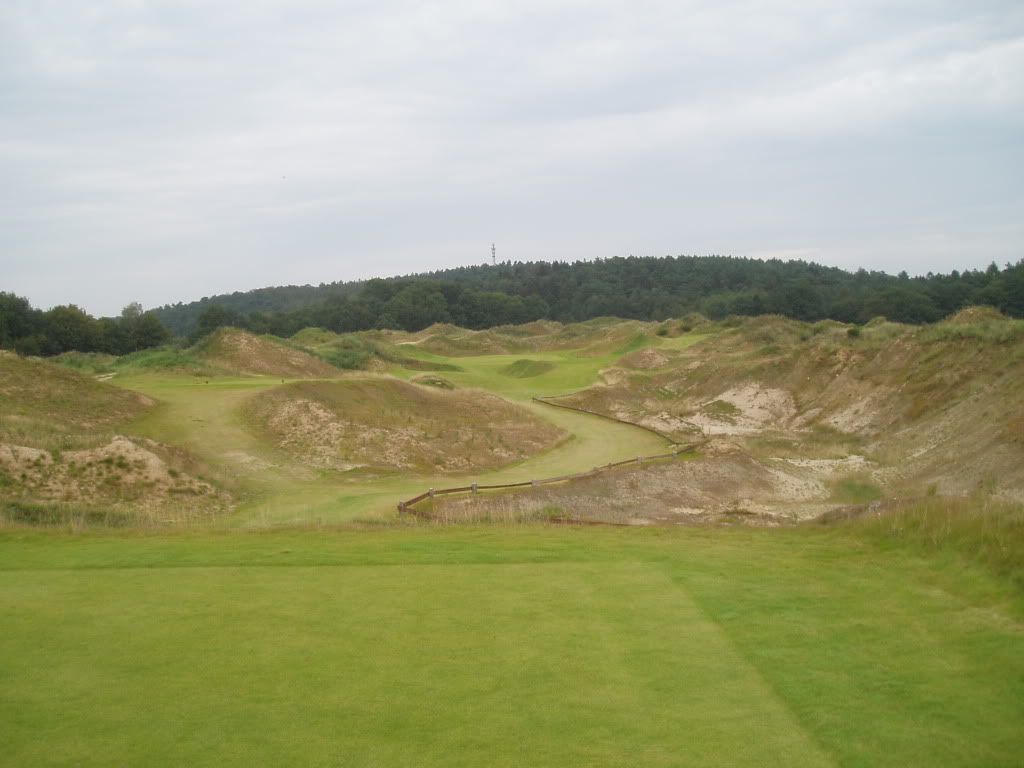
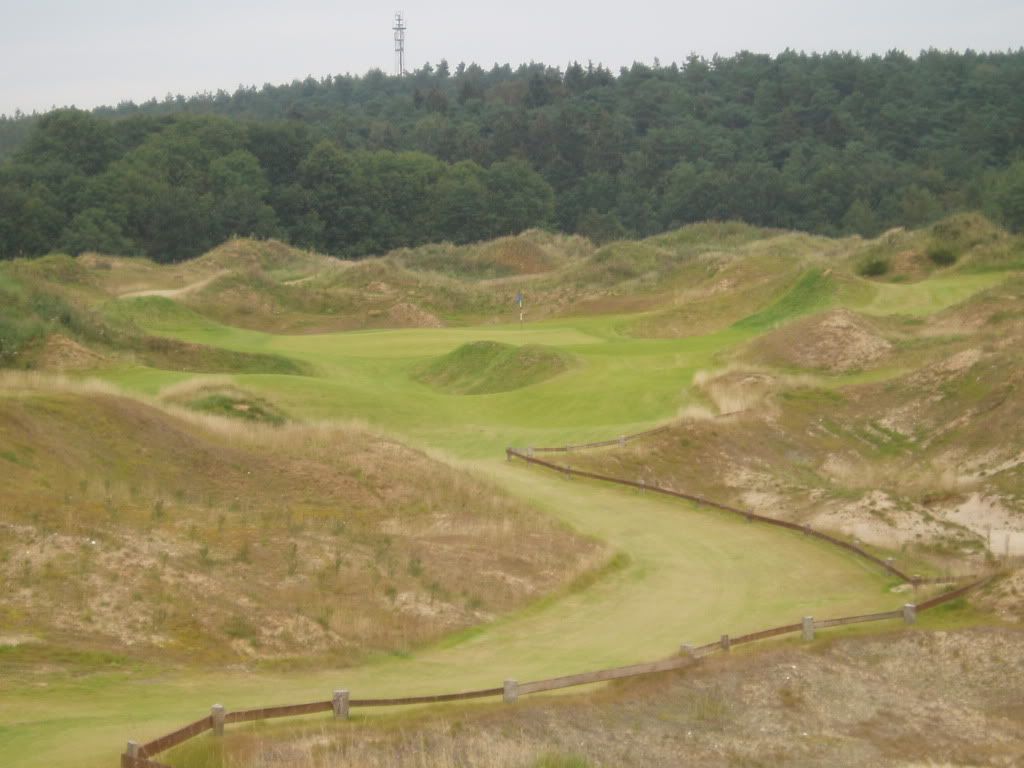
Until the grass grows in this resembles a moonscape.
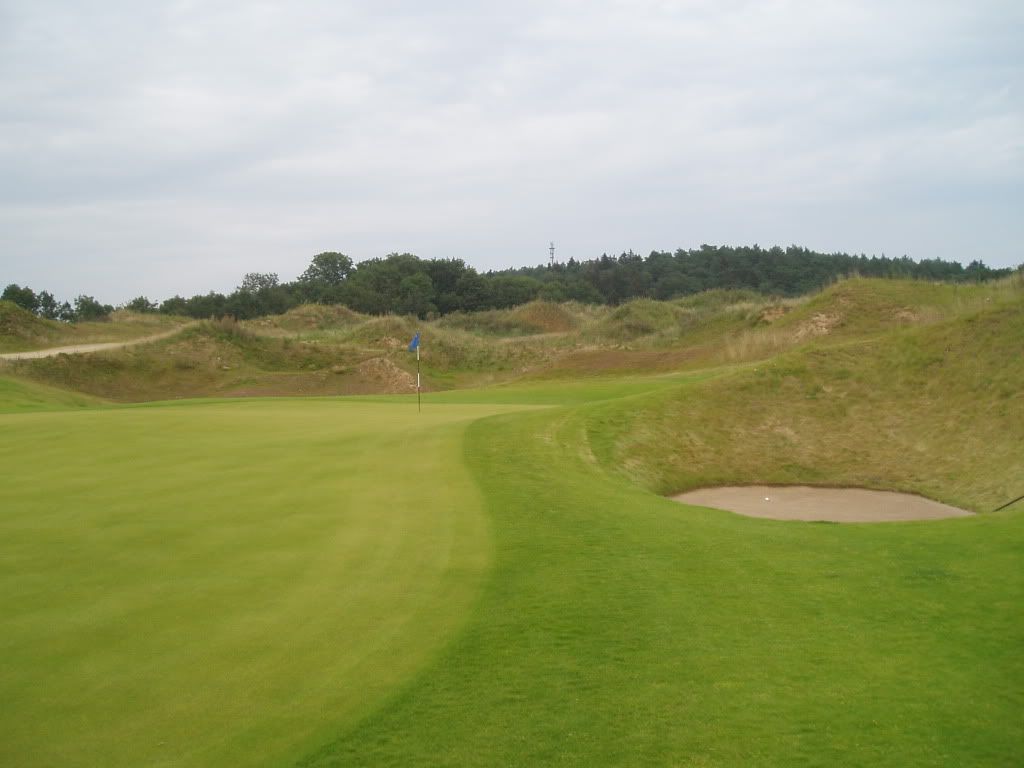
A single pot bunker guards the right side.
6. 536 metres par 5.
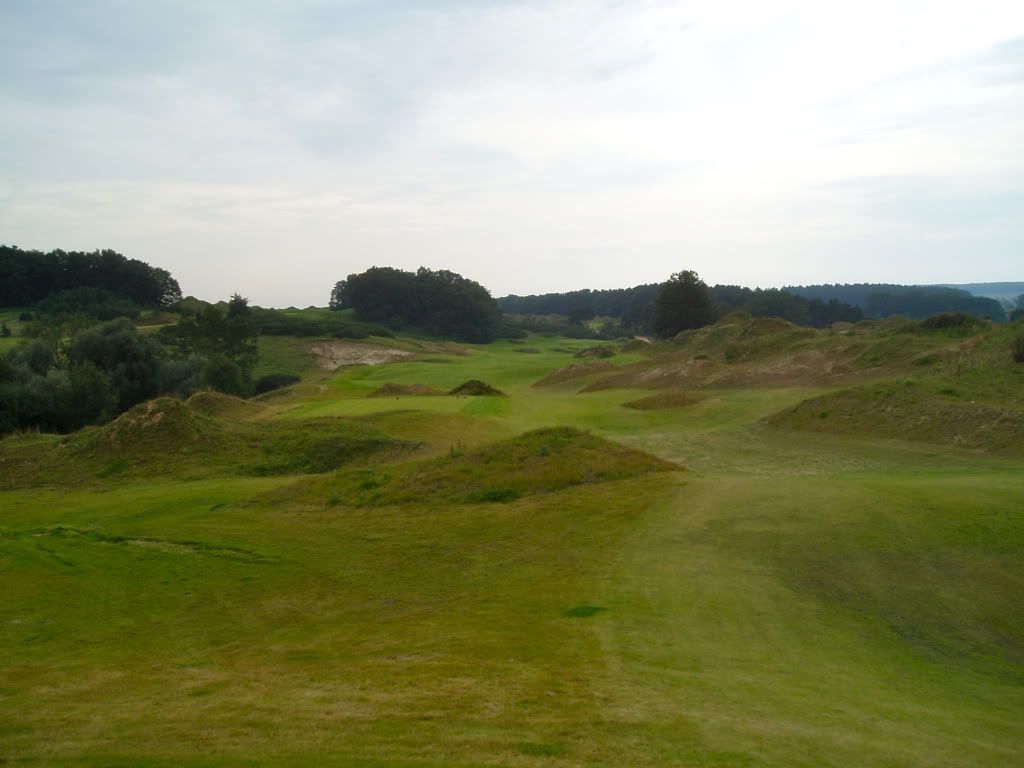
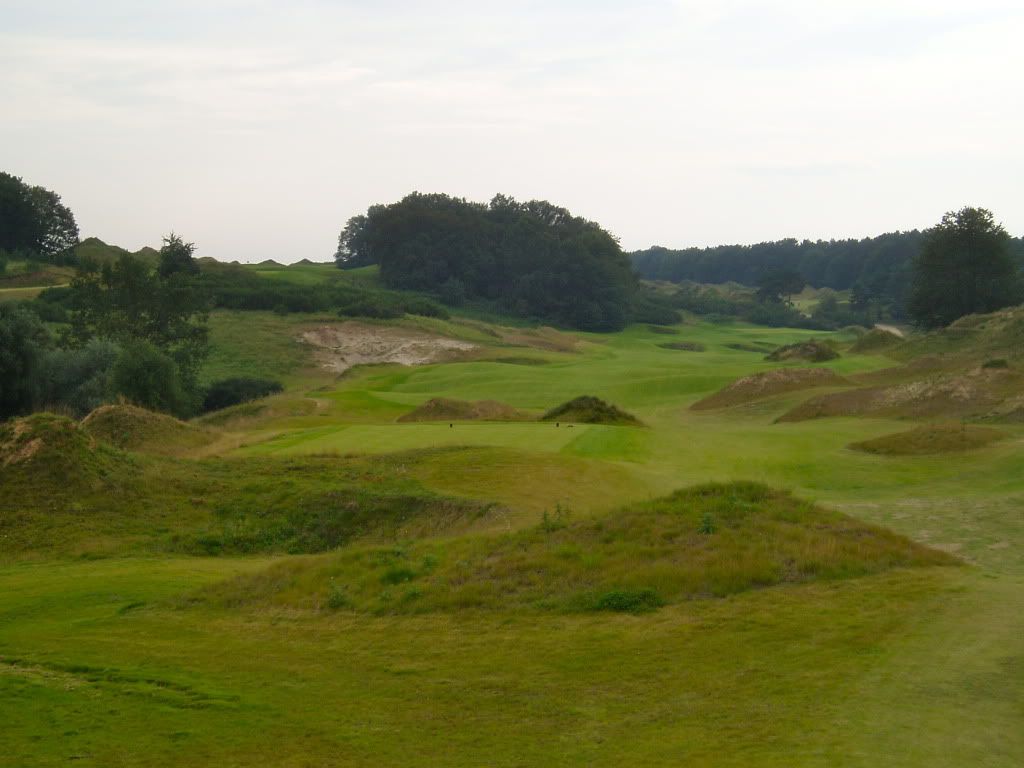
There’s a lot happening on this fairway.
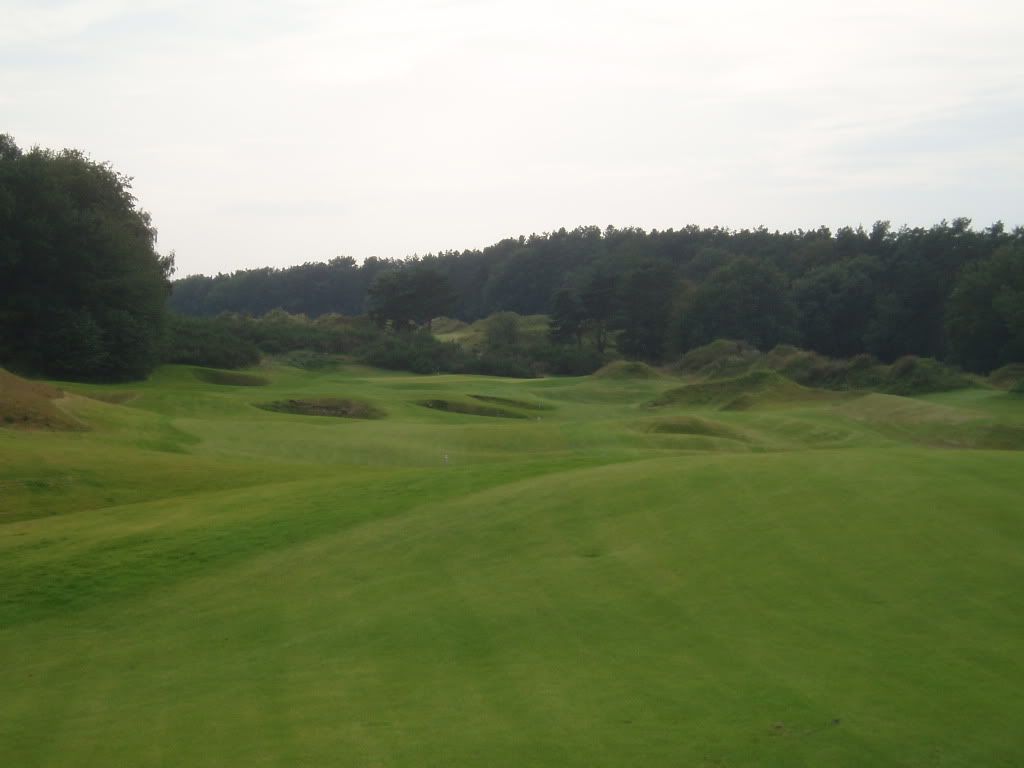
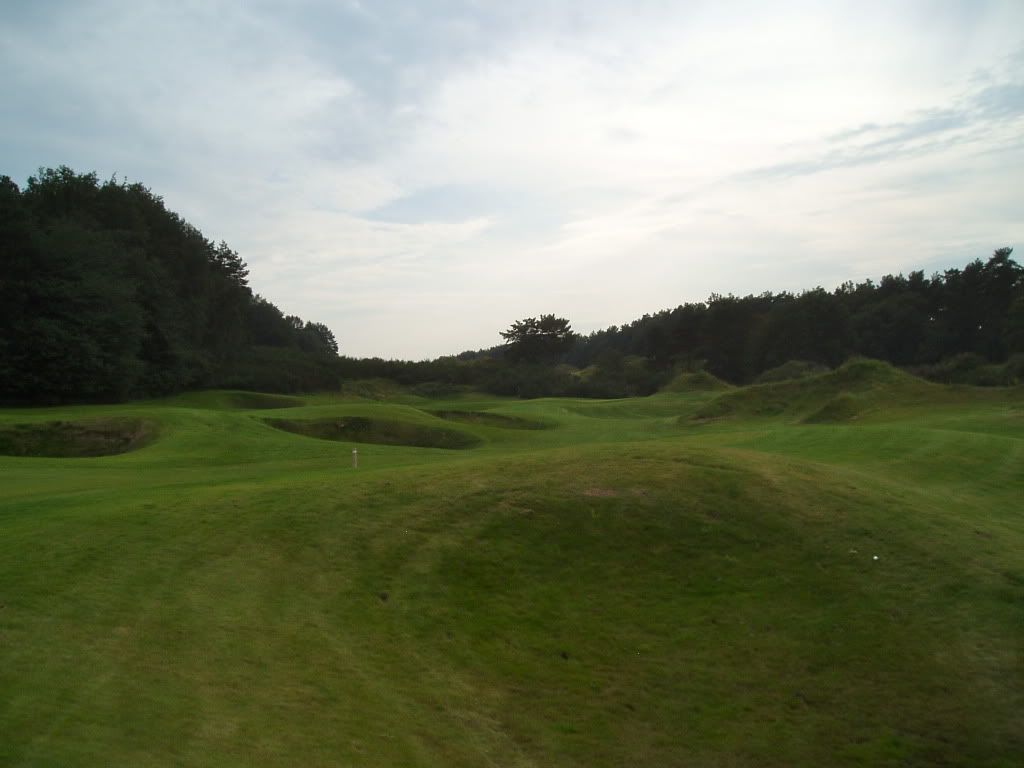
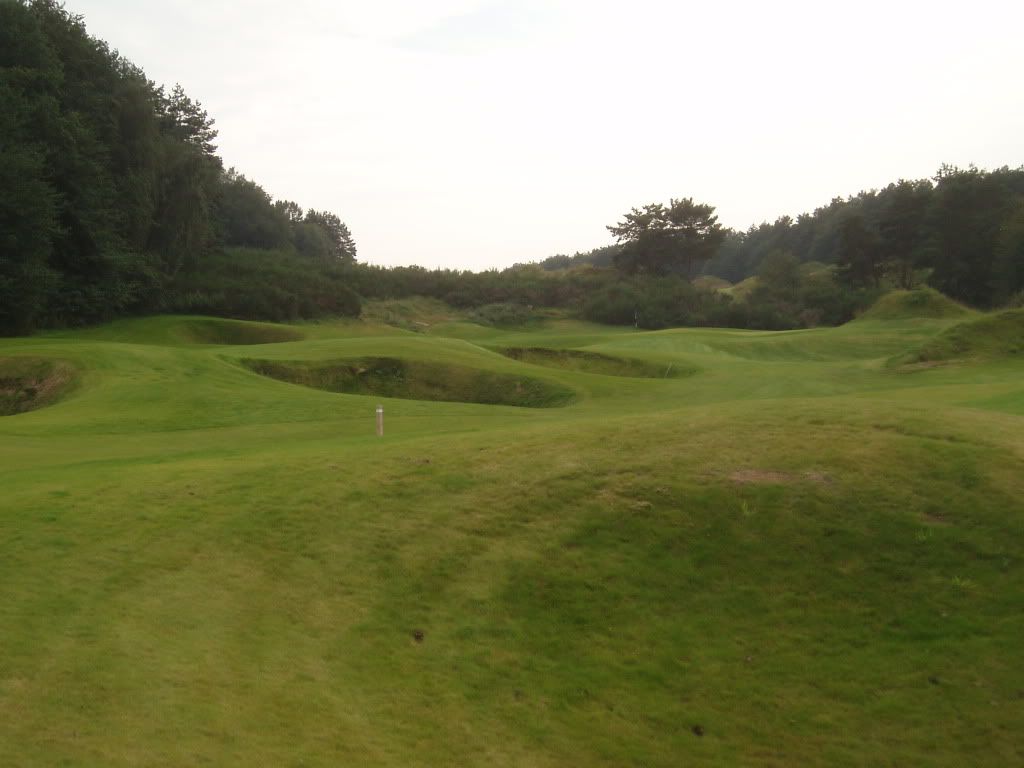
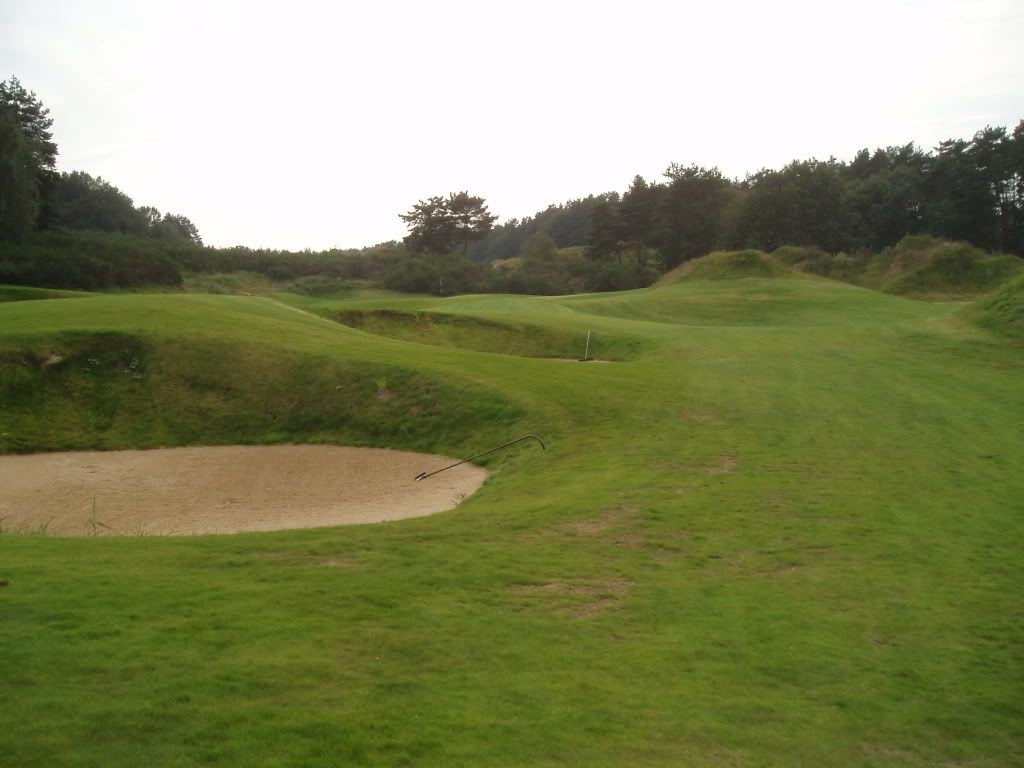
The good player’s second shot is governed by a string of pot bunkers set on the diagonal some 75 metres from the green.

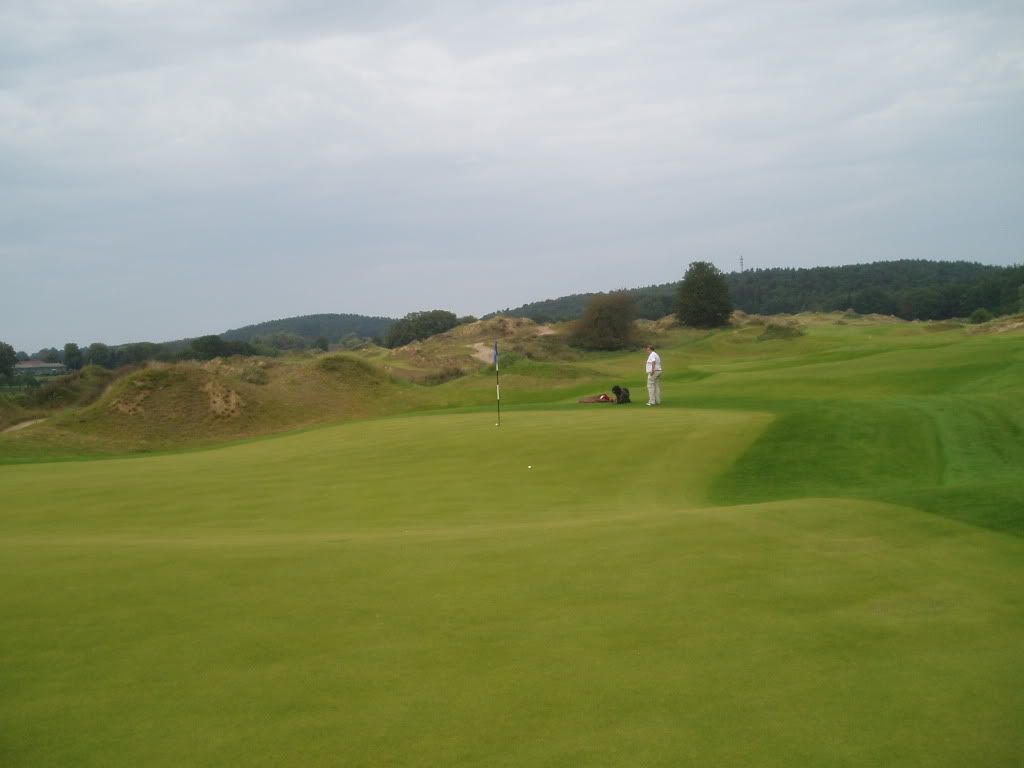
The green undulates wildly and the left part of the putting surface is effectively a Biarritz, higher at the front and back, lower in the middle. Golf historian, Christoph Meister, was brave enough to take on the course using hickories. Frodo was an excellent companion during the round.
7. 203 metres par 3.

The prospect from the championship tee.


It’s still a tidy carry from the yellow tee, 176 metres uphill.
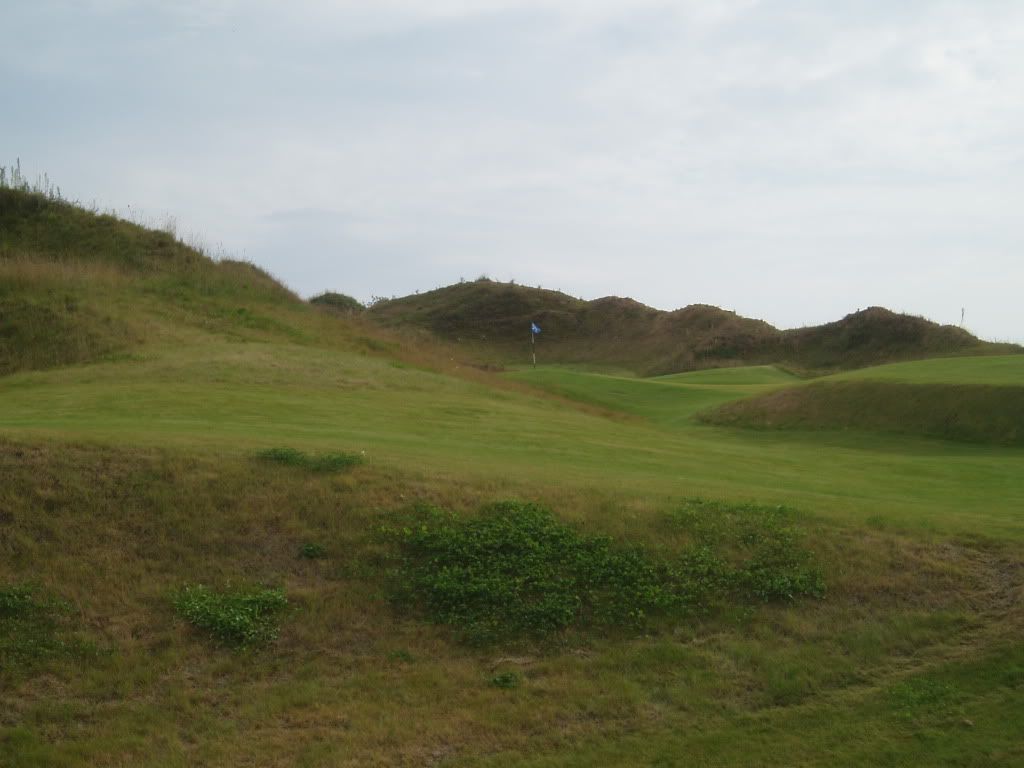
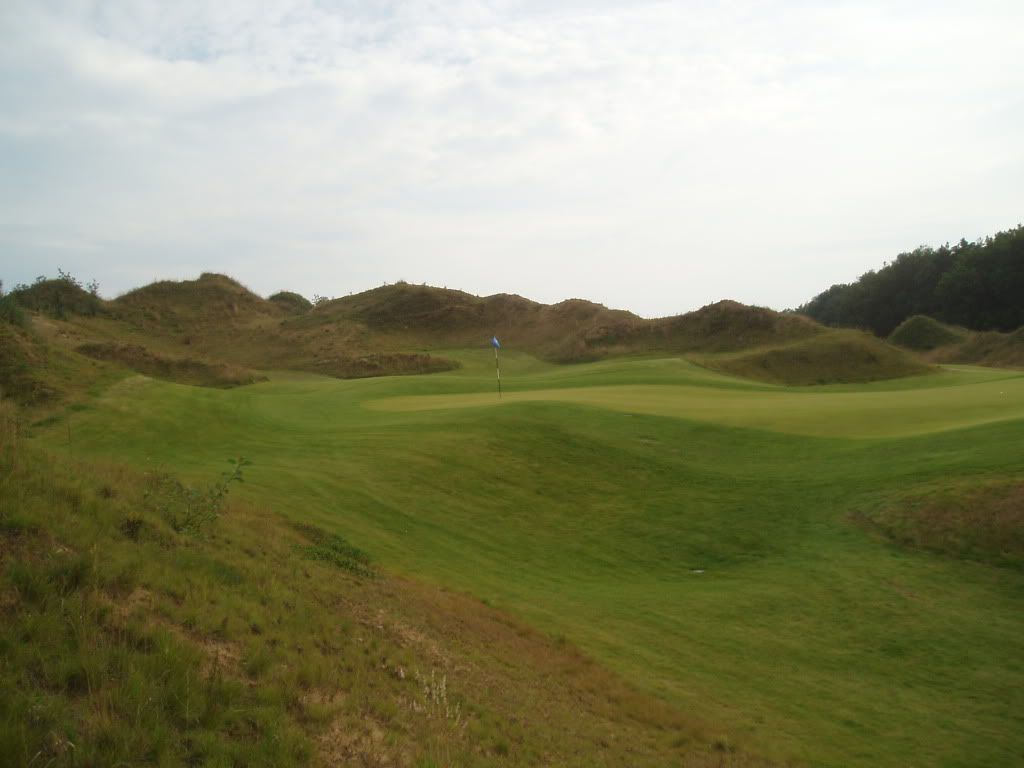
There is a lot of trouble if you fall short, severely punishing the weak player. The green is angled sharply across the line from right to left.
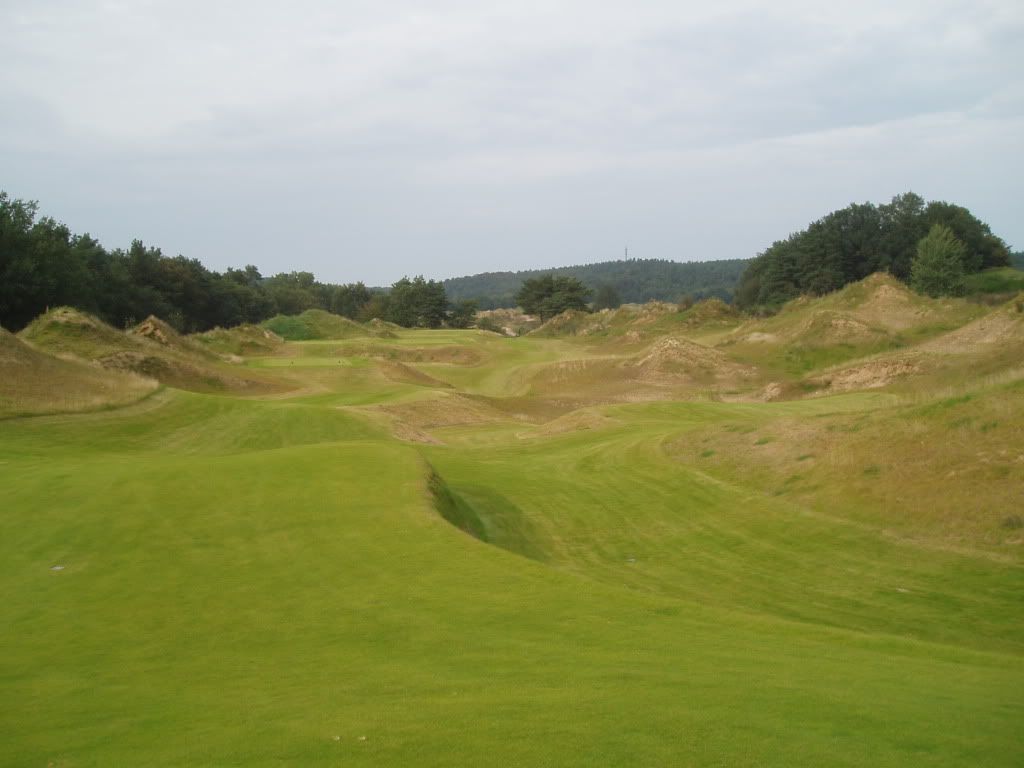
Looking back down towards the tee it is readily apparent how much work Krause has put in and that a great deal of that affects the poor player and is irrelevant to the big boys. Note the longitudinal ridge in the foreground. There are many of these throughout the course. Fortunately I never came to grief in one, but the consequences of a ball hitting the edge of the ridge could be horrible.
8. 390 metres par 4.
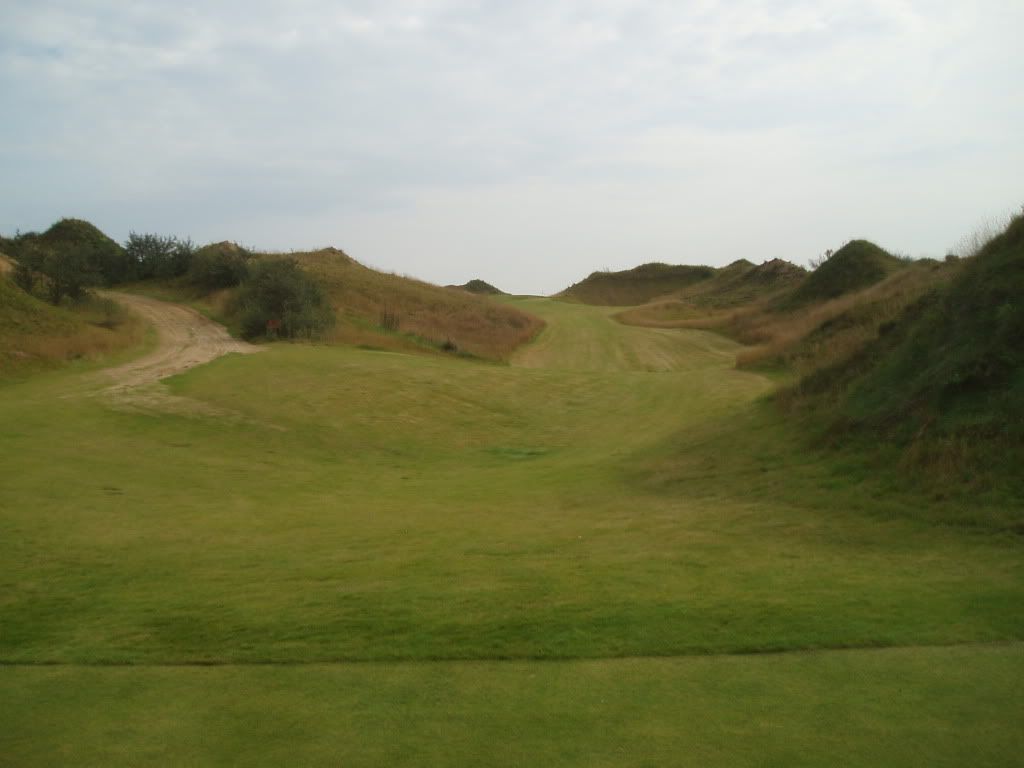
From the back tee it is not immediately clear what you should do.

It seems that you should hit your tee shot over the mound on the right, beyond which is a strip of fairway giving a view of the green.
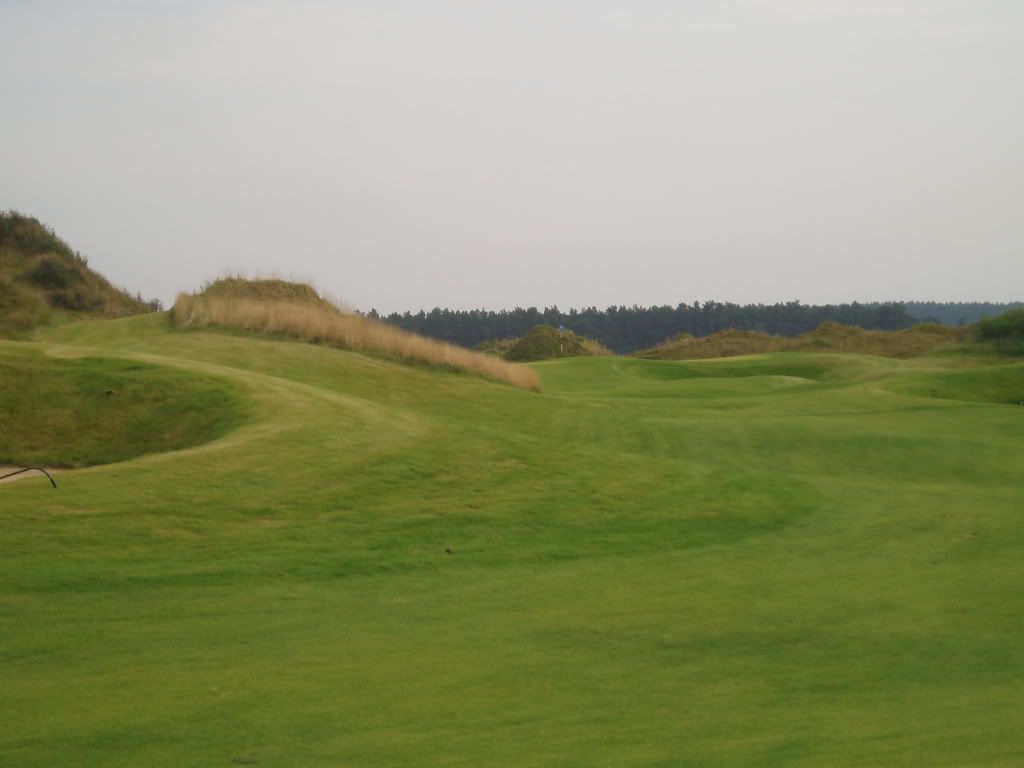
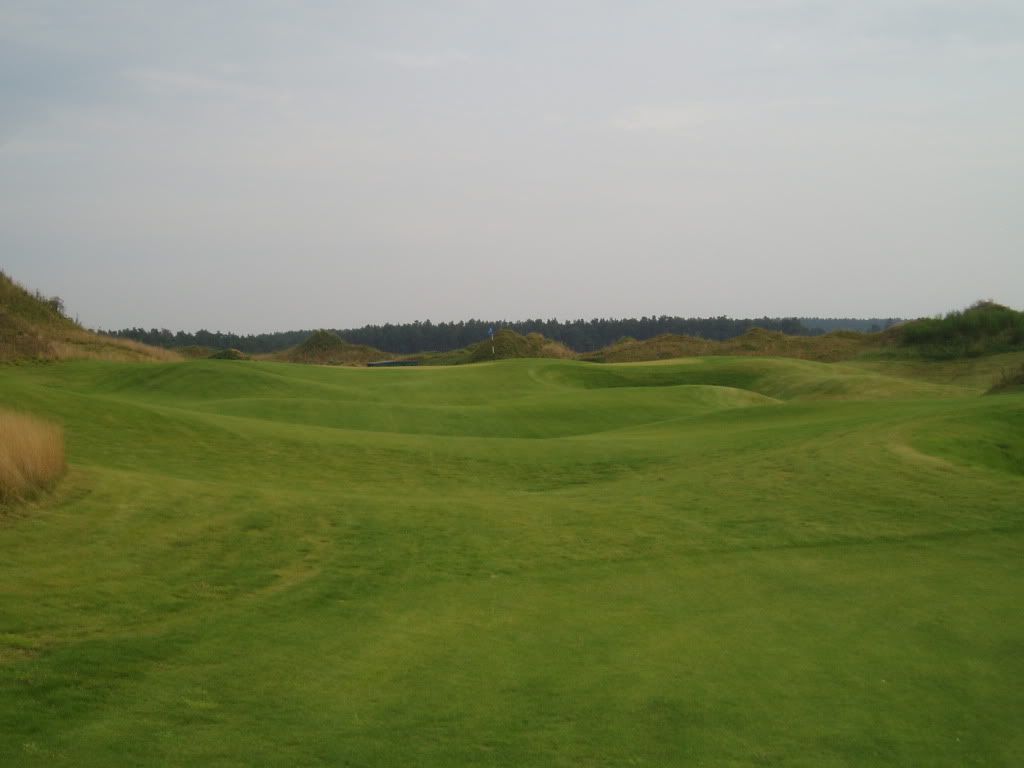
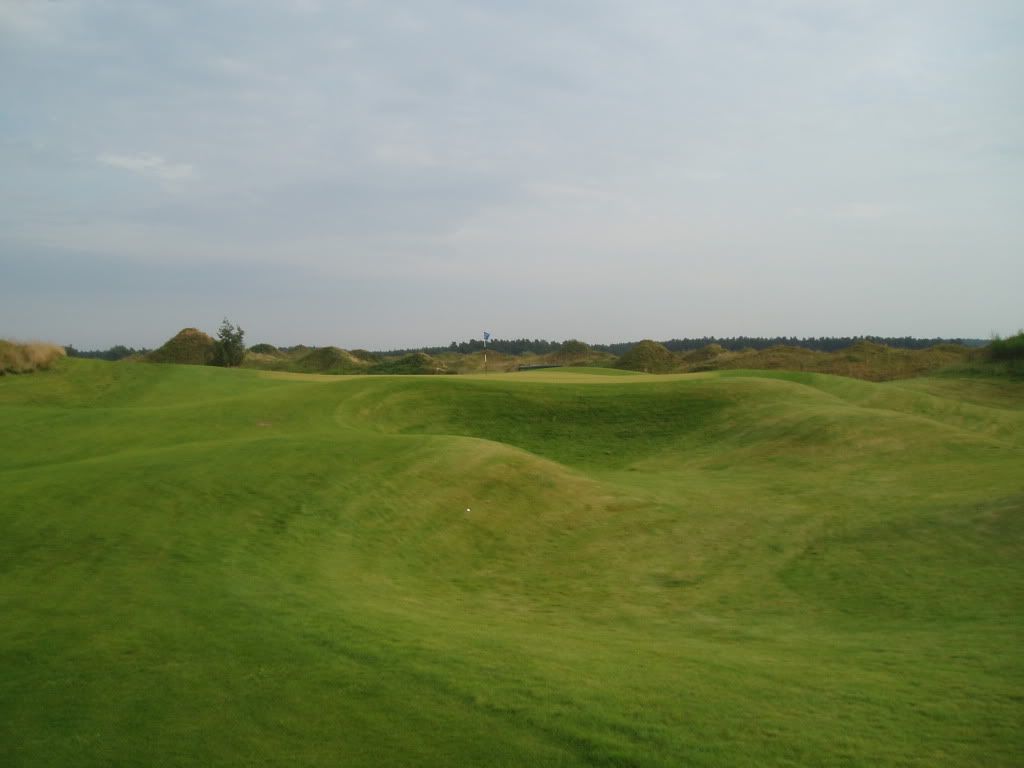
The run in to the green is protected by a depression.
9. 372 metres par 4.
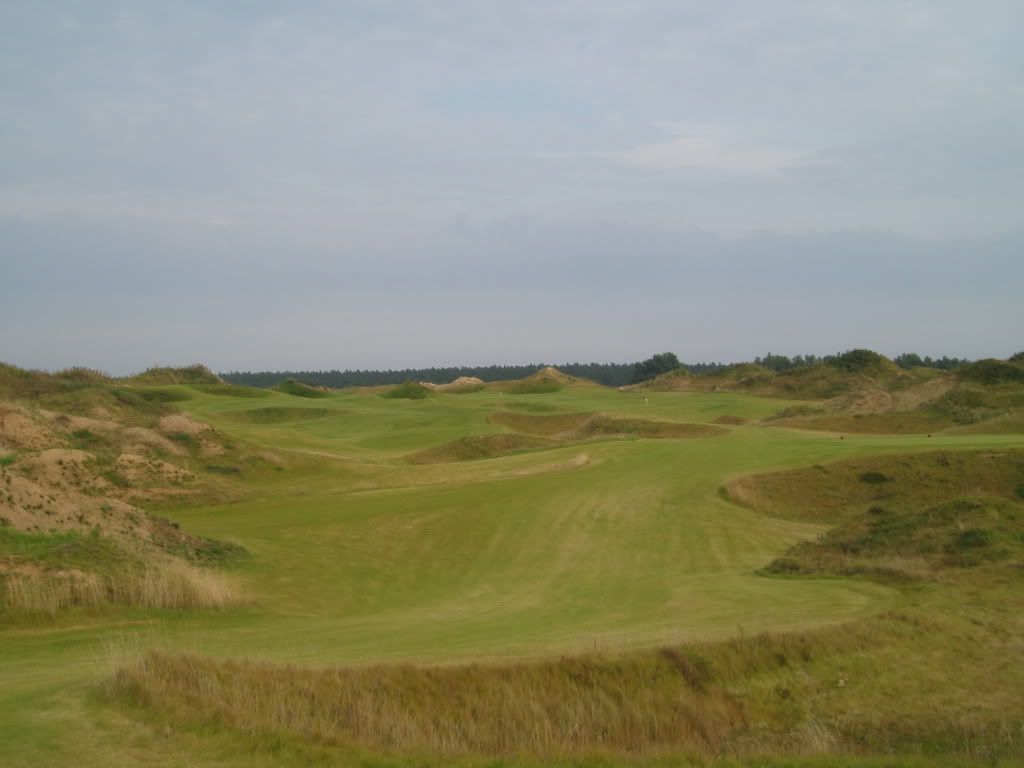
A split fairway apparently gives the big hitter an option of driving clear of the bunkers on the left hand route, or taking the longer but less risky right hand route.
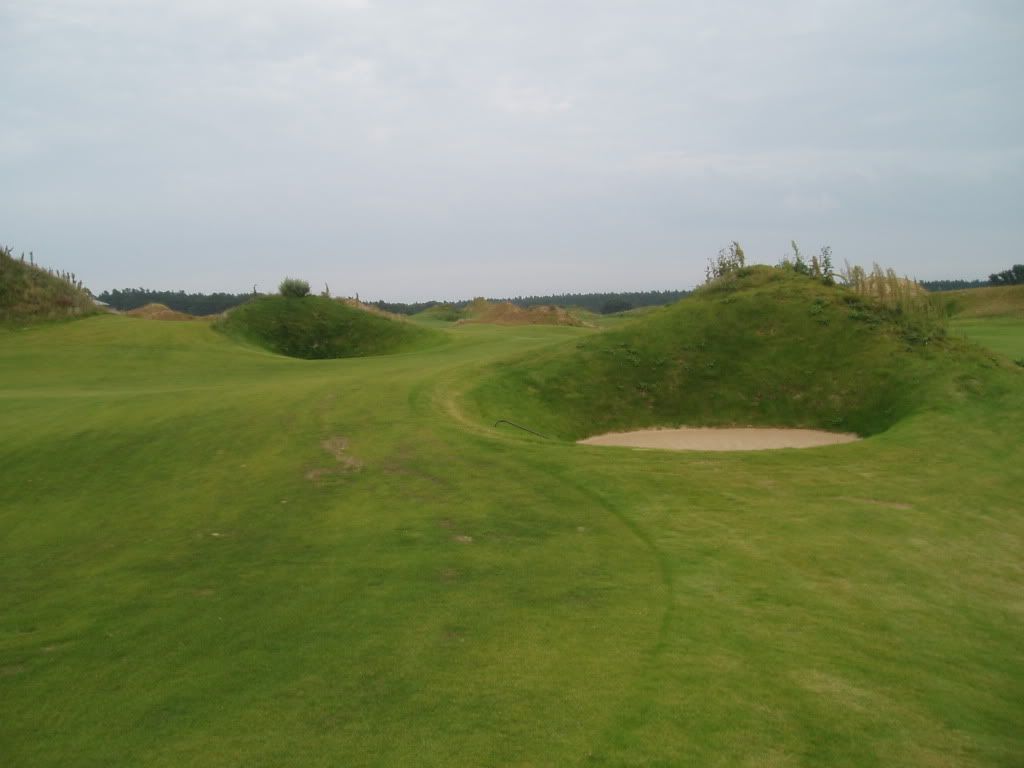
These are serious bunkers.
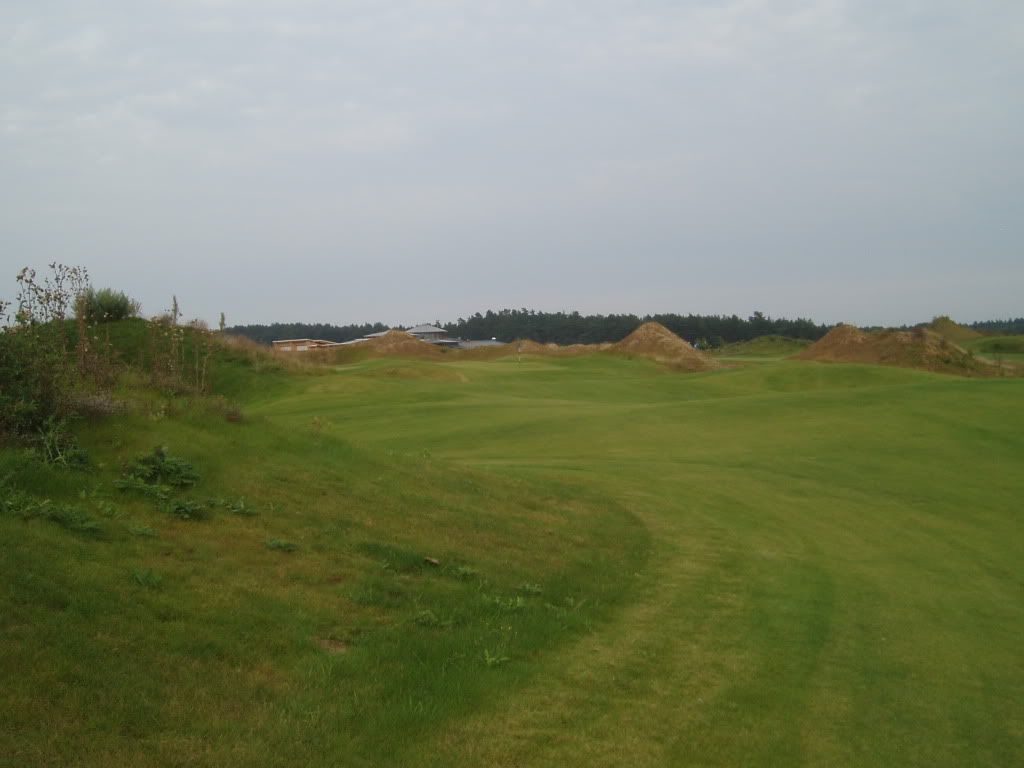
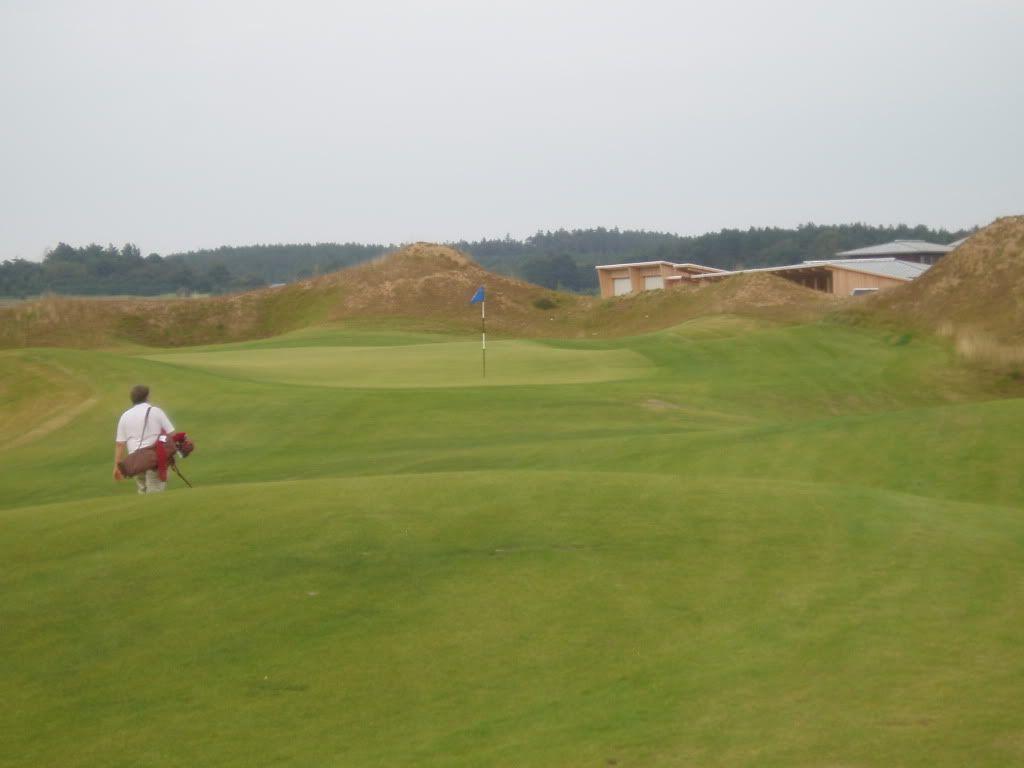
The run in is remarkably uneventful.